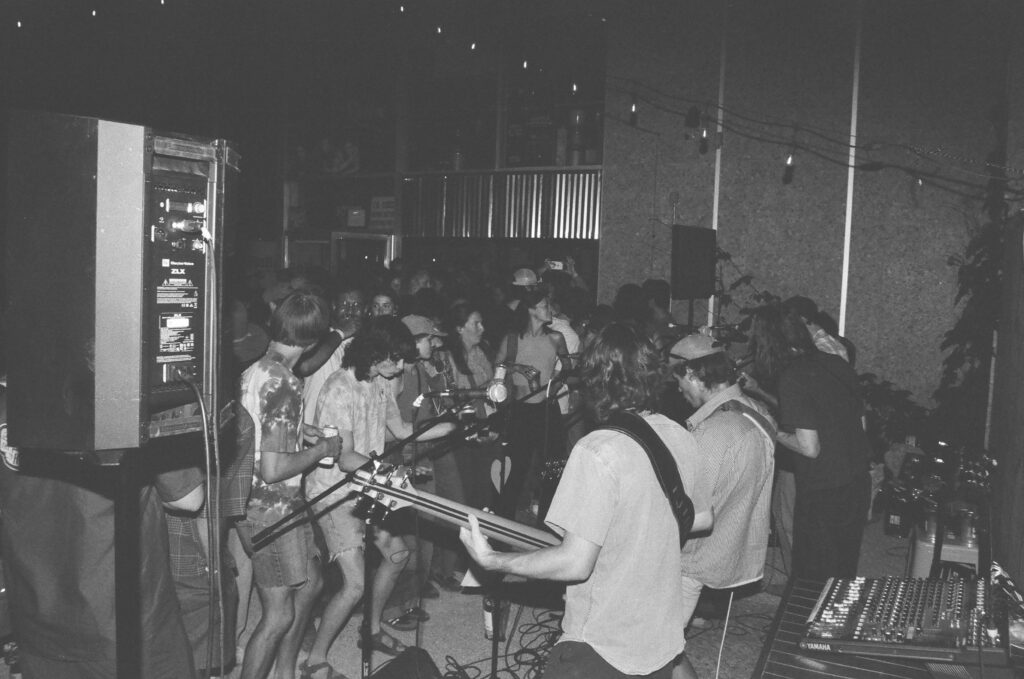EDITOR’S NOTE: For preview coverage of the 49th Utah Arts Festival, which runs June 19-22, The Utah Review is presenting individual or group profiles of artists, performers, entertainers and some newcomers to the event. Visitors will also see the first significant change of the last 15 years in the festival map. There are several new features this year: Voodoo Productions’ street theater will include roaming graffiti stilt walkers, contortionists and living master works of art. Salt Lake Acting Company will appear for the first time at the festival, offering a sample from its upcoming summer show, The Secret Lives of the Real Wives in the Salt Lake Hive. Urban Arts is offering its largest live graffiti mural installation, while a row of several other artists will be demonstrating their creative process in real time. For kids, as admission for those 12 and under will be free, there will be plenty of make-and-take art options in Frozen Spaces in the Art Yard. The City Library auditorium will be the home to the 22nd edition of the international Fear No Film program, with the strongest slate of narrative short films in the event’s history. Of course, dance, who wears the empress jewels in performing arts, will be represented by Repertory Dance Theatre, Ririe-Woodbury Dance Company, Echoing Spirit Dancers and, of course, the ever-popular 1520 Arts, at The Round. For tickets and more information, see the Utah Arts Festival website.
THEORETICAL BLONDE
Despite the name, none of the Salt Lake City band Salt Lake City band members are actually blonde, which seems to be a fun little misdirect. What is true is that their music takes cues from bluegrass, jazz, americana, country, jam band and singer-songwriter traditions, blending these styles into a dynamic and energetic mix. The band’s debut EP includes the mellow bluegrass track One of Us while Another Lover Gone is a exhilarating platform to display each member’s serious bluegrass chops and then a different path emerges in Perfect Timing, which hews toward an understated indie-folk track with fluid expressive rhythmic structures. Band member Ford Huntington answered several questions by email.
TUR: Would like a brief account of how you (and/or your group or band) started, was formed and decided to set out on its performing and writing music platforms.
FH: Theoretical Blonde started at a bluegrass jam at Gracie’s Bar in downtown Salt Lake City. Peter Cain and myself (Ford Huntington) met there in October of 2022. We then met Grayson Wickel at that same jam a few months later. I knew a bass player named Patrick Mcnally. At the time, we were working on some projects together for Kuhl. I ended up bringing Patrick to the jam and introduced him to Peter and Grayson. Shortly thereafter, we were offered a gig at Gracie’s before we were even a band. We put together a short set and played it. Upon playing that set (which went pretty well), we were offered a weekly residency at RoHa Brewing in Salt Lake City and thus, Theoretical Blonde was born. About 8 months into playing all over the Salt Lake Area, we added Patrick’s brother (Daniel McNally) to the band and then the unit was truly complete. We played weekly at RoHa Brewing every Thursday for two years. This really allowed us to hone our craft and cut our teeth as a band.
TUR: What is your musical training and background coming in as a performer and as a group?
FH: We are all from fairly different musical backgrounds, which I think is what gives us our own, unique sound. I (Ford Huntington) grew up playing mostly rock and blues music, as well as some classical from age 6. Peter Cain had much the same background as me growing up on rock, blues, and bluegrass music. Grayson Wickel is from Asheville, North Carolina and grew up playing bluegrass and old time from an extremely young age. He is probably the most connected to the bluegrass music we play. Patrick and Daniel McNally came up playing both classical and Jazz together for their entire young lives. It wasn’t until meeting the rest of the band that they started playing bluegrass.
TUR: Who do you consider as role models, inspirations and influences in your music and performing?
FH: We are all fans of so much different music, but some shared heroes are: Billy Strings, The Grateful Dead, Doc Watson, Miles Davis, Watchouse, Phish, Tony Rice, Bela Fleck, and many more artists in this same realm.
TUR: If you were to encapsulate your musical base into a simple phrase or tag, what would it be?
FH: Our simple phrase or tag to encapsulate our music would be that of improvisation and good, clean fun. Anything could happen at a Theoretical Blonde show!
TUR: What do you consider the most essential elements of writing or performing a song for yourself or your group that not only resonates with you (or your band and group) but also with the audiences who have been coming to your shows?
FH: I think that there are a lot of different elements that go into this. At its core, it’s about making music that resonates with us first. If we can get something that connects with us, then it’s pretty likely it will connect with other people. I think it also has a great deal to do with the energy and environment that we five curate on stage and off. We’re all best friends who love to play music together and I think that the audience can feel this at our shows. When we play, I think we have a way of making the audience feel like an active participant in the music and environment we’re creating. It feels good.


